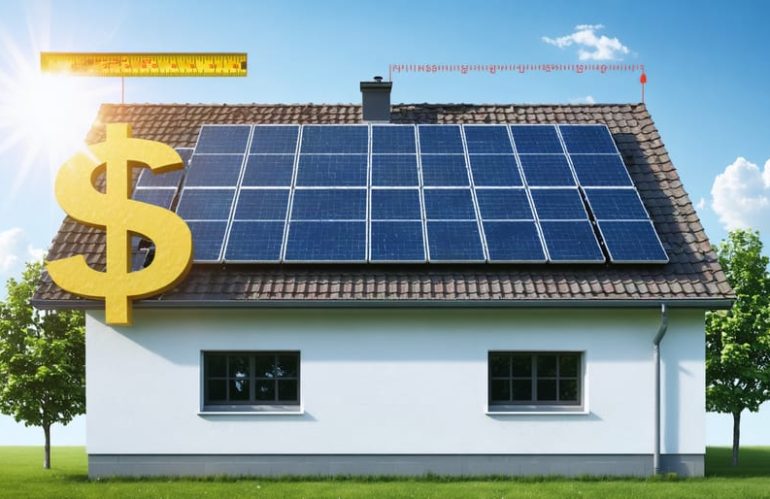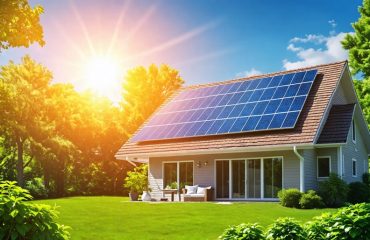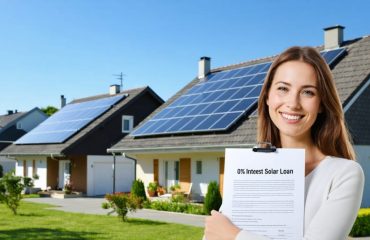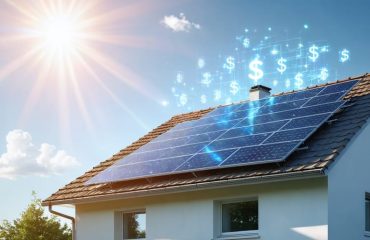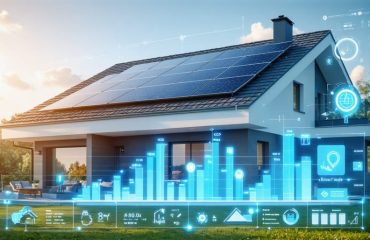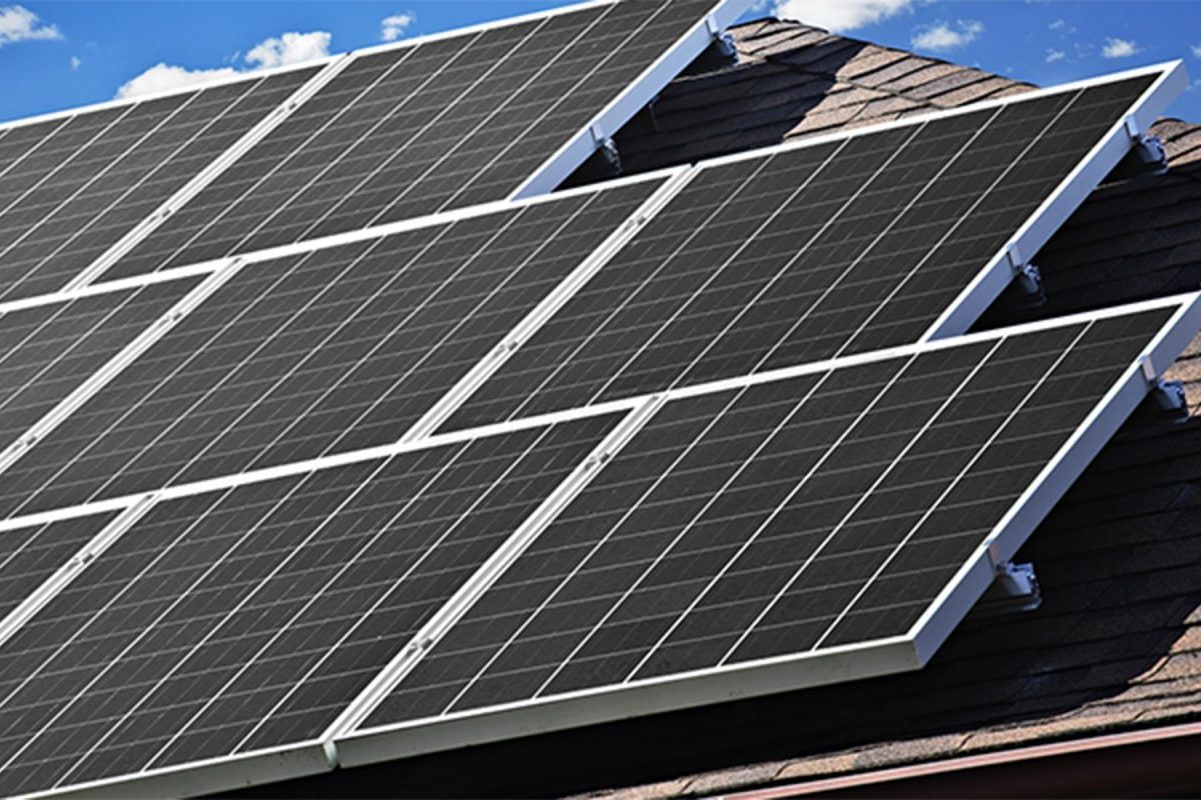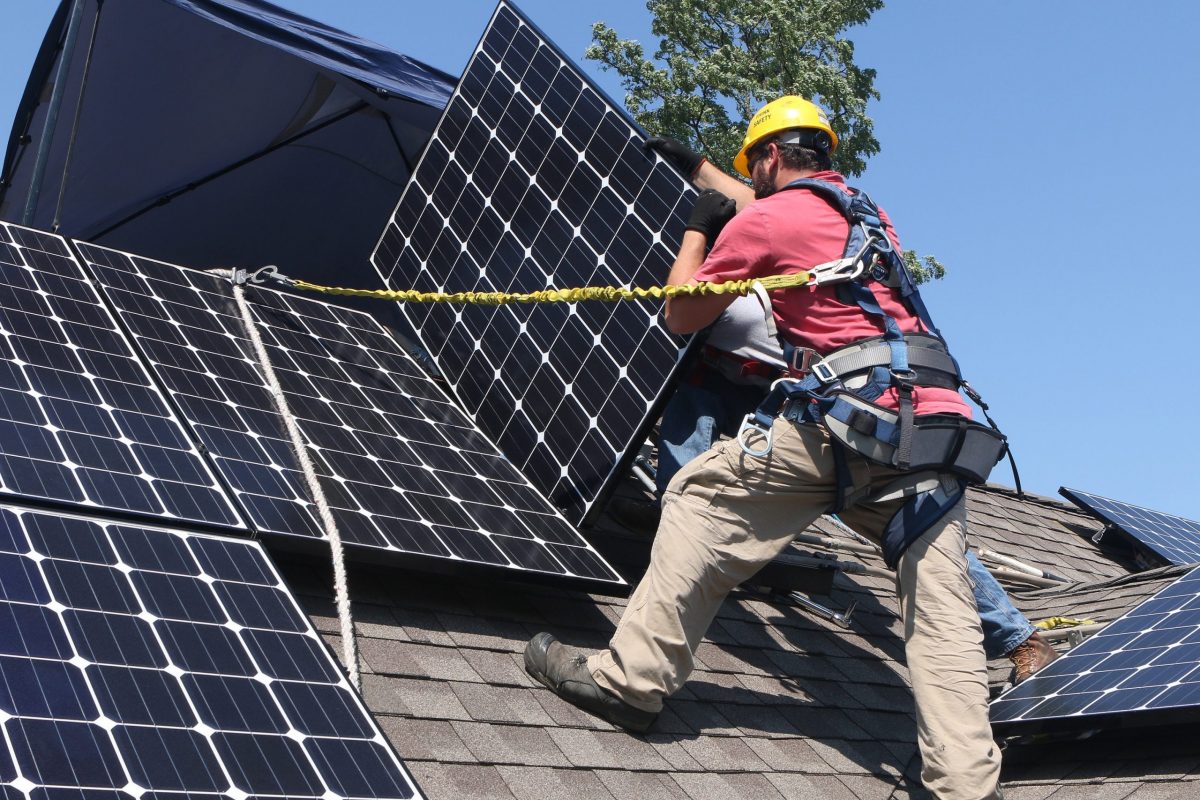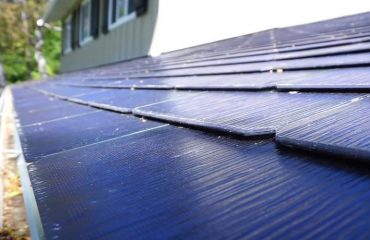Solar panel costs have dropped dramatically over the past decade, making residential solar more accessible than ever. Today’s homeowners can expect to pay between $4 to $10 per square foot for solar panels, with the average 2,000-square-foot home installation ranging from $8,000 to $20,000 before incentives and tax credits.
Understanding cost per square foot helps gauge initial investment, but it’s only part of the equation. Modern solar installations factor in your home’s energy needs, roof orientation, local sunshine hours, and available incentives to determine the most cost-effective system. A 400-square-foot solar array might power a modest home completely, while larger households may need twice that coverage for similar energy independence.
The good news? Solar panel efficiency continues to improve while prices decrease. Current systems deliver more power per square foot than ever before, meaning you might need less roof space than you think to meet your energy goals. When combined with federal tax credits, state rebates, and potential energy savings of $1,000-$2,000 annually, the real cost per square foot becomes significantly more attractive over your system’s 25+ year lifespan.
Breaking Down Solar Panel Costs Per Square Foot
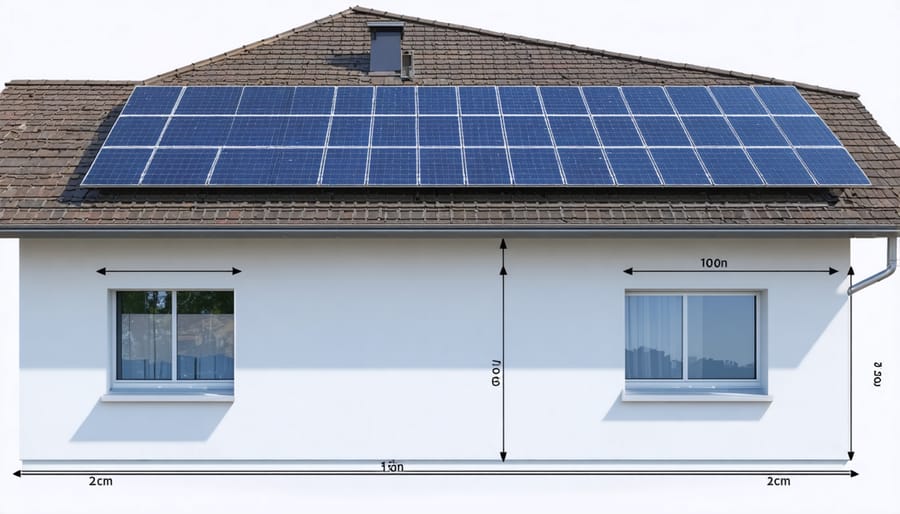
Average Cost Ranges
The cost of different types of solar panels can vary significantly, with current market prices ranging from $4 to $10 per square foot. Economy panels typically cost between $4 and $6 per square foot, making them an attractive option for budget-conscious homeowners. Mid-range panels, which offer better efficiency and durability, usually fall between $6 and $8 per square foot.
Premium solar panels, known for their superior performance and longer warranties, generally cost between $8 and $10 per square foot. These high-end options often deliver better energy production in limited space and may be worth the investment for homes with smaller roof areas.
It’s important to note that these prices reflect the panels themselves and don’t include installation costs, which typically add $2 to $4 per square foot to the total project cost. Factors affecting the final price include your location, roof configuration, and local installation rates.
Monocrystalline panels, while more expensive at $6 to $10 per square foot, offer the highest efficiency rates. Polycrystalline panels provide a more affordable alternative at $4 to $7 per square foot, though with slightly lower efficiency. Thin-film panels are usually the most economical at $4 to $5 per square foot but require more space to generate the same amount of power.
Factors Affecting Price Per Square Foot
Several key factors influence the cost of solar panels per square foot, making each installation unique. Panel efficiency plays a crucial role – higher-efficiency panels produce more power in a smaller space, though they typically come with a higher price tag. Premium panels from top manufacturers can cost 20-30% more than standard options but often deliver better long-term value through increased energy production.
Material quality significantly impacts pricing, with monocrystalline panels generally commanding higher prices than polycrystalline alternatives. While monocrystalline panels are more expensive, they’re also more efficient and often more aesthetically pleasing, making them popular for residential installations.
Your location also affects costs, both through varying labor rates and local climate conditions. Sunny regions may allow for fewer panels, reducing overall costs, while areas with less sun exposure might require more panels to achieve desired power output.
Installation complexity is another important factor. Simple, unobstructed roof installations typically cost less per square foot than installations requiring special mounting solutions or extra equipment. Roof angle, structural requirements, and accessibility all influence the final price.
Market conditions and available incentives can also impact costs. Local rebates, federal tax credits, and utility company programs often reduce the effective cost per square foot, making premium options more affordable for many homeowners.
Installation Costs and Additional Expenses
Labor and Installation Fees
When considering solar panel installation costs, labor and setup fees typically account for 30-35% of your total investment. On average, installation labor costs range from $0.59 to $1.20 per square foot, depending on your location and roof complexity.
Several factors influence these installation fees. Steep or complex roof designs may require additional safety equipment and labor hours, potentially increasing costs by 10-15%. Multi-story homes also tend to have higher installation fees due to the extra time and safety measures needed.
The installation process includes mounting hardware setup, electrical wiring, and inverter installation. Professional installers usually charge between $15 and $25 per labor hour, and a typical residential installation takes 2-3 days to complete. Some companies bundle these costs into their per-watt pricing, while others break them out separately.
It’s worth noting that experienced installers can often complete the job more efficiently, potentially reducing overall costs. Many reputable installation companies offer warranties on their workmanship, typically covering 5-10 years of protection. While it might be tempting to cut corners on installation costs, proper professional installation is crucial for system performance and longevity.
Remember that local building permits and inspection fees are usually separate from installation labor costs and may add $200-500 to your total project budget.
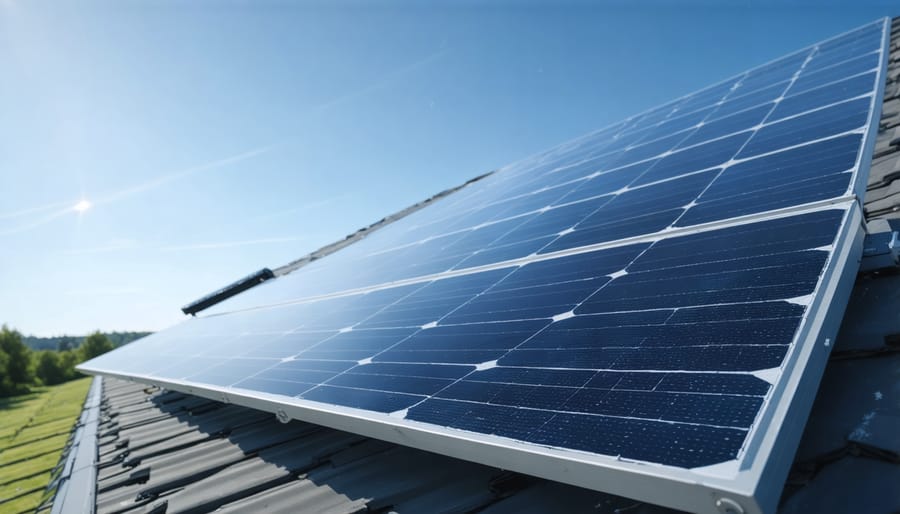
Additional Equipment and Materials
When installing solar panels, you’ll need more than just the panels themselves. The mounting hardware is essential for securing your panels safely to your roof or ground installation. These components typically include rails, clamps, and brackets, adding about $0.50 to $1.00 per square foot to your total costs.
A solar inverter is another crucial component that converts the DC power generated by your panels into usable AC power for your home. Inverters generally cost between $1,000 and $2,500, depending on the size of your system. You may also need a power optimizer or microinverter for each panel to maximize energy production, especially if some panels receive partial shade.
Other necessary materials include:
– Electrical wiring and conduit
– Junction boxes and disconnects
– Monitoring system equipment
– Battery storage (optional but recommended)
– Permits and documentation
The electrical components and wiring typically add $0.30 to $0.50 per square foot. If you opt for battery storage, expect to add $5,000 to $15,000 to your total system cost. While these additional materials increase your upfront investment, they’re essential for a safe, efficient, and long-lasting solar installation that will provide reliable clean energy for decades to come.
Remember to factor in these costs when planning your solar project, as they can represent 20-30% of your total installation budget.
Cost Savings and Return on Investment
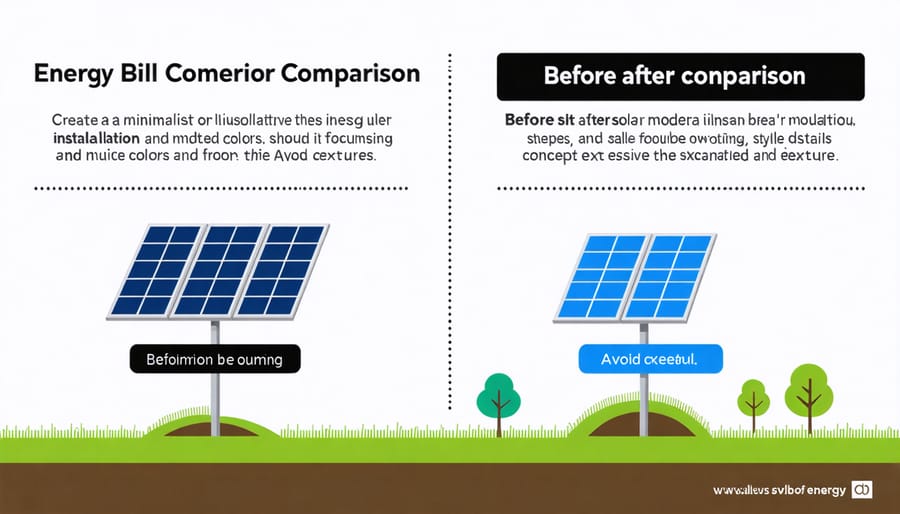
Energy Bill Reduction
Installing solar panels can significantly reduce your monthly energy bills, with many homeowners seeing savings between 50% to 90% on their electricity costs. To calculate your potential savings, start by reviewing your current monthly electricity usage in kilowatt-hours (kWh) and multiply it by your local utility rate.
For example, if your household uses 900 kWh per month at $0.14 per kWh, your current monthly bill is approximately $126. A properly sized solar system could offset 75% of this usage, resulting in monthly savings of about $94.50, or $1,134 annually.
Several factors influence your actual savings:
– Local sunshine hours and weather patterns
– Roof orientation and shade
– Electricity rates in your area
– Time-of-use billing structures
– Net metering policies
Many utility companies offer net metering, which credits you for excess energy your panels produce during sunny days. This credit offsets the cost of power you draw from the grid at night or during cloudy weather, maximizing your savings potential.
Keep in mind that energy prices typically rise 2-3% annually, meaning your savings will likely increase over time. A solar installation that saves you $1,134 in the first year could save you over $1,300 annually within five years, assuming a 3% annual increase in electricity rates.
To maximize your return on investment, consider implementing energy-efficient practices alongside your solar installation. Simple changes like LED lighting and smart thermostats can enhance your overall energy savings while reducing the size of the solar system you need.
Available Incentives and Tax Credits
Several financial incentives can significantly reduce your solar panel investment costs. The federal solar Investment Tax Credit (ITC) remains one of the most substantial solar tax incentives, allowing you to deduct 30% of your total solar installation costs from your federal taxes through 2032. This credit applies to both material and installation costs, making it a valuable opportunity for homeowners.
Many states offer additional incentives, including tax credits, rebates, and performance-based incentives. These can vary significantly by location, with some states providing thousands of dollars in additional savings. For example, some areas offer Solar Renewable Energy Credits (SRECs), which let you earn money by selling credits for the clean energy your system produces.
Local utilities often provide rebates and performance-based incentives that can further reduce your costs. Some utility companies offer net metering programs, allowing you to sell excess electricity back to the grid, effectively lowering your monthly energy bills.
Property tax exemptions are another common benefit, ensuring your home’s increased value from solar installation doesn’t result in higher property taxes. Many states also offer sales tax exemptions on solar equipment purchases.
To maximize these benefits, it’s important to research available incentives in your area before installation. Many of these programs have specific deadlines or limited funding, so timing your solar investment strategically can help you take full advantage of available savings. Remember that these incentives can substantially reduce your per-square-foot costs, making solar installation more affordable than ever.
Making the switch to solar power is a significant decision that can transform your home’s energy profile and financial future. As we’ve explored throughout this article, the cost of solar panels typically ranges from $4 to $10 per square foot, but understanding this pricing is just the beginning of your solar journey.
Remember that while the square footage cost is important, your total investment will depend on various factors, including your location, roof configuration, and energy needs. The good news is that today’s solar technology is more efficient and affordable than ever before, making it an increasingly attractive option for homeowners.
When considering solar panel installation, keep these key takeaways in mind: First, focus on your overall energy requirements rather than just square footage costs. Second, factor in the substantial long-term savings through reduced electricity bills and available tax incentives. Third, consider the environmental impact – the average home solar system can eliminate 3-4 tons of carbon emissions annually.
The initial investment in solar panels may seem substantial, but the returns are compelling. Most homeowners see their systems pay for themselves within 5-10 years, after which they enjoy essentially free electricity for the remainder of the system’s 25-30 year lifespan.
Now is an excellent time to take action on solar power. With federal tax credits, state incentives, and increasing electricity costs, the financial benefits of going solar have never been more attractive. We encourage you to get quotes from several reputable installers in your area to compare options and find the best solution for your home.
By investing in solar panels today, you’re not just making a smart financial decision – you’re taking a meaningful step toward energy independence and environmental sustainability. The future of home energy is bright, and solar power is leading the way.

